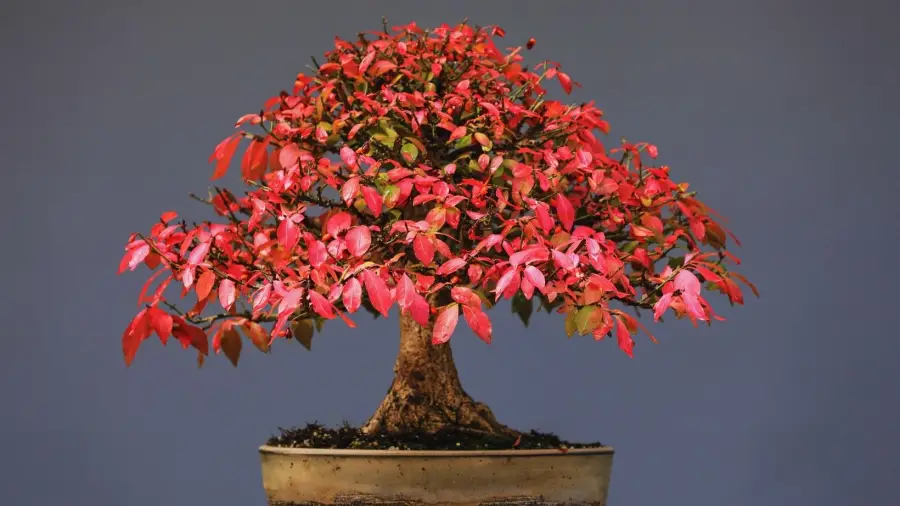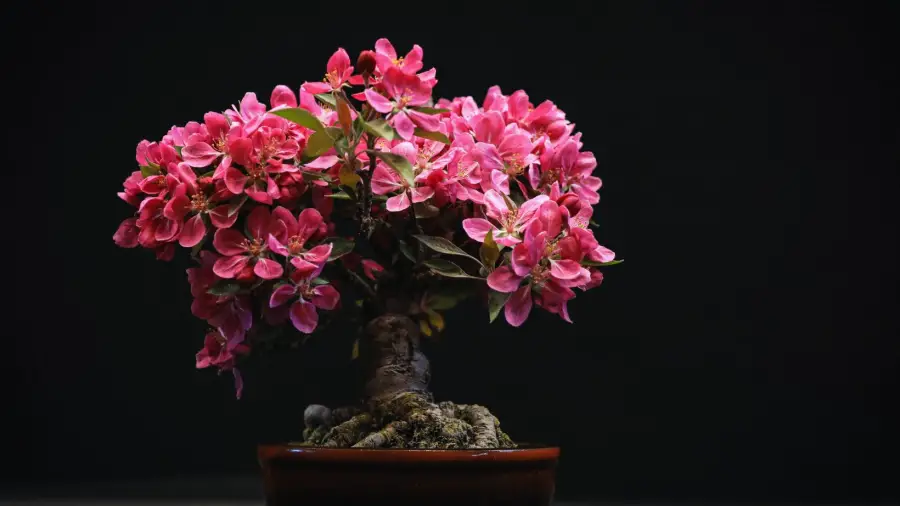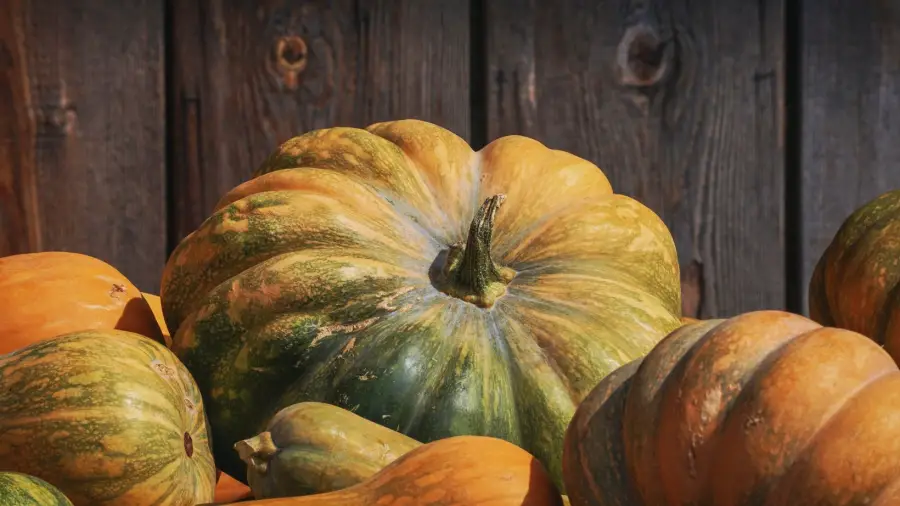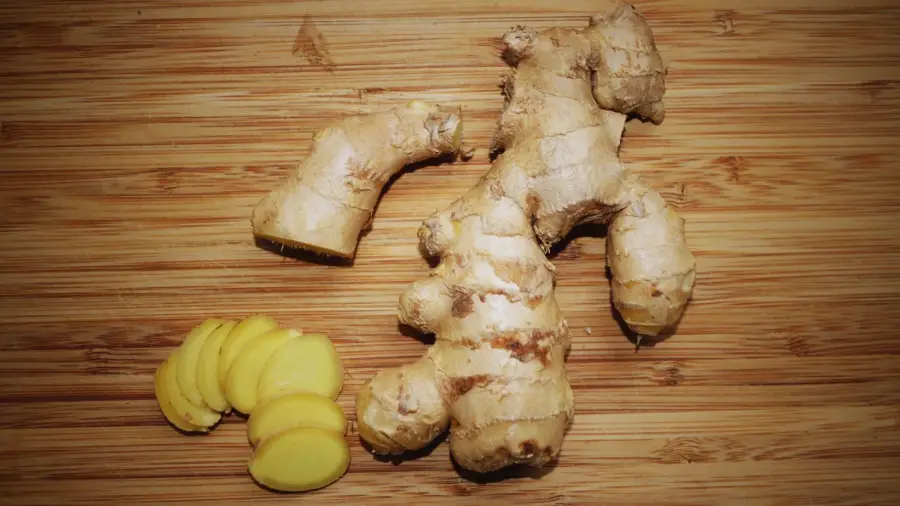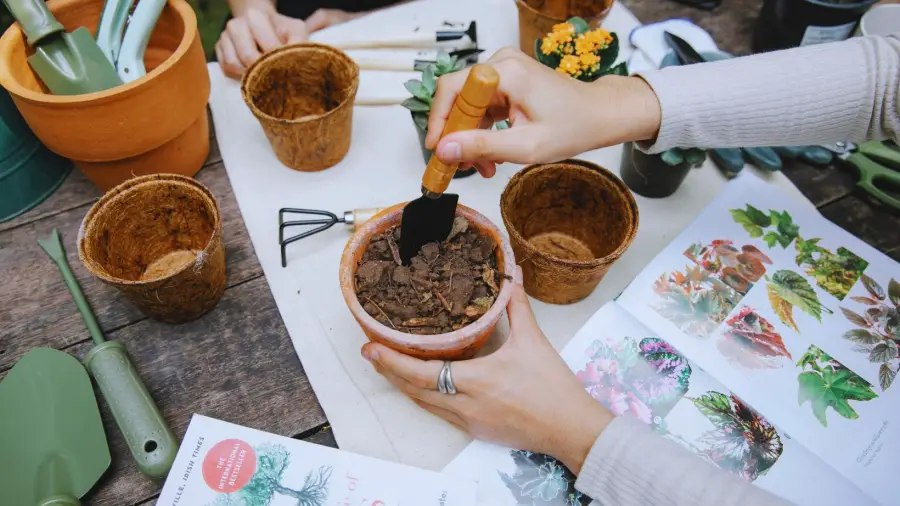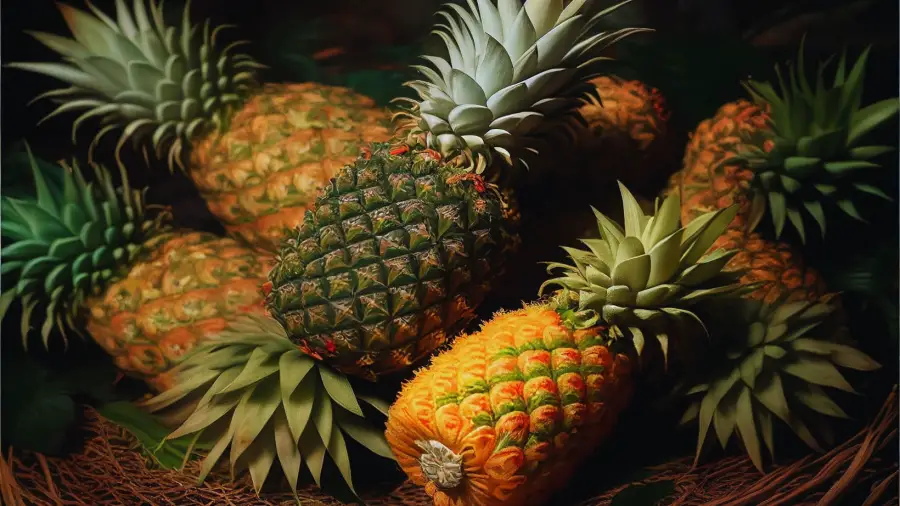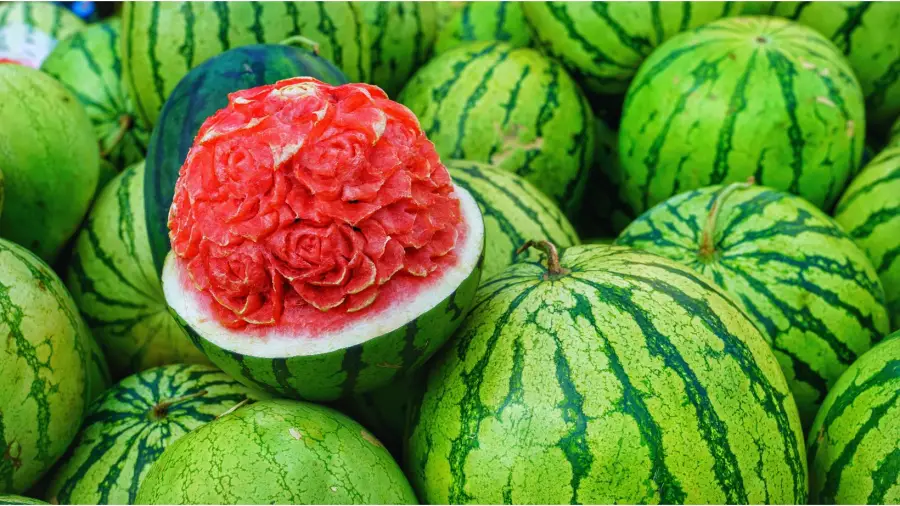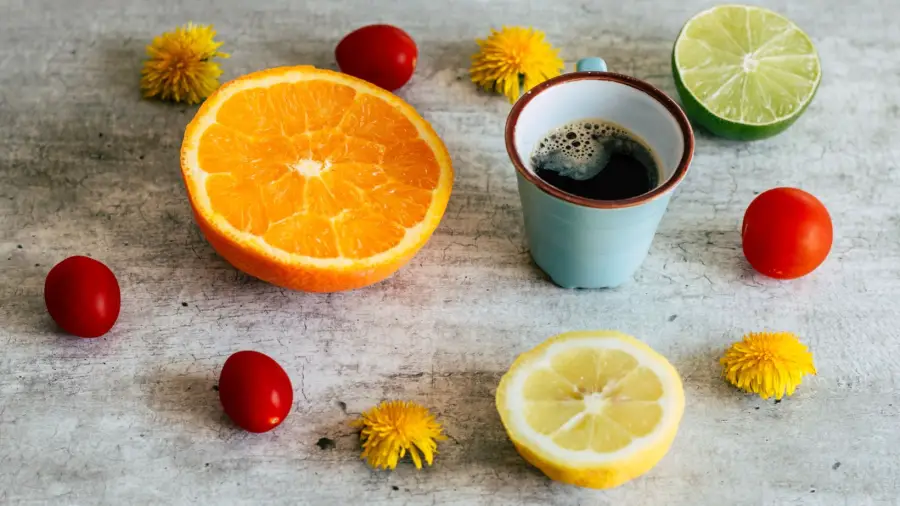Bonsai is a form of highly skilled gardening that involves the cultivation of small trees in containers. This ancient art form originated in China and has since spread worldwide, with unique styles and techniques developed in different countries.

Bonsai trees are meticulously trained and pruned to create miniature landscapes, with the goal of evoking a sense of awe and tranquility. These miniature trees require special care, including regular watering, feeding, and shaping, to maintain their delicate beauty. Bonsai enthusiasts invest time, patience, and expertise in mastering the art of bonsai, resulting in breathtaking creations that can be admired for generations.
The art of bonsai provides a deeply rewarding and fulfilling experience for those who appreciate the harmony and balance found in nature.
Table of Contents
The History Of Bonsai
Bonsai, the art of growing miniature trees in containers, has a long and fascinating history that dates back thousands of years. This ancient horticultural practice originated in China and Japan, where it developed unique techniques and styles that are still revered today. In this blog post, we will explore the rich history of bonsai, tracing its origins and the early techniques and styles that shaped this art form.
Origins In Ancient China
The roots of bonsai can be traced back to ancient China, where it was known as “penzai” or “penjing.” These miniature trees were cultivated in pots by the Chinese elite, who viewed them as symbols of wealth and taste. The art of penzai dates back to the Han Dynasty (206 BCE – 220CE), and it became increasingly popular during the Tang Dynasty (618-907 CE).
During this time, penzai trees were mainly grown for religious and spiritual purposes. They were believed to possess magical powers and were often used in Taoist and Buddhist rituals. The Chinese craftsmen meticulously styled these miniature trees to represent the beauty of nature and the harmony between humans and the universe.
Early Techniques And Styles
In the 6th and 7th centuries, the art of bonsai was introduced to Japan through Buddhist monks who had studied in China. The Japanese adapted and refined the Chinese techniques, giving birth to their own unique style of bonsai, known as “bonkei” or “saikei.”
The Japanese embraced bonsai as a form of artistic expression and began refining techniques to suit their cultural aesthetics. One of the earliest Japanese bonsai schools, the Sakufu School, emerged during the Muromachi period (1336-1573). Under the influence of Zen Buddhism, the Japanese developed a deep appreciation for simplicity and understated elegance.
During the Edo period (1603-1868), bonsai became more accessible to the general public. Artisans began popularizing the art and sharing their knowledge by publishing bonsai compendiums. The techniques and styles of bonsai continued to evolve, and various schools, such as the Shinsei School and the Zeshin School, emerged.
The Edo period also saw the development of distinct bonsai styles such as the formal upright style (chokkan), the slanting style (shakan), the windswept style (fukinagashi), and the cascade style (kengai). These styles aimed to mimic the unique characteristics of mature trees found in nature, capturing their essence on a small scale.
Today, bonsai has evolved into a worldwide hobby and art form, with enthusiasts from various cultures embracing its beauty and meditative qualities. The techniques and styles honed by ancient Chinese and Japanese practitioners continue to inspire and influence contemporary bonsai artists around the globe.
Bonsai In Modern Times
Bonsai is an ancient art form that has seamlessly transitioned into modern times, captivating enthusiasts around the globe with its elegance and tranquility. As we delve into the contemporary world of bonsai, we witness the influence it has gained in the west, its growing popularity worldwide, and the profound symbolism it holds as a representation of patience and mindfulness.
Western Influence And Popularity
The art of bonsai originated in East Asia, but it has since made its way to the western world, where it has gained immense popularity. The western bonsai movement has adopted its own unique style, blending traditional techniques with a touch of modernity. This fusion has led to the creation of various styles such as formal upright, informal upright, slanting, and cascade, each displaying a distinct aesthetic appeal.
The western influence on bonsai is evident in the introduction of new species, particularly those native to western regions, as well as innovative training methods. Instead of purely adhering to the traditional Asian species, Western bonsai enthusiasts experiment with a wide variety of trees, including conifers, deciduous trees, and even fruit trees.
The popularity of bonsai in the western world can be attributed to its ability to bring a sense of peace and serenity to urban environments. As urban spaces are becoming increasingly crowded, individuals are turning to bonsai as a means of reconnecting with nature. The practice of cultivating and tending to a miniature tree not only provides a therapeutic escape from the pressures of modern life but also serves as a reminder of the beauty and resilience found in the natural world.
Global Appreciation For The Art Form
Bonsai has transcended cultural boundaries and is now appreciated and practiced by people from all corners of the globe. It has become a global art form, with bonsai exhibitions and competitions drawing participants and spectators from diverse backgrounds.
The globalization of bonsai has sparked a cross-pollination of ideas and techniques, further enriching the art form. Bonsai artists from different countries and cultures exchange knowledge and skills, fostering an environment of collaboration and growth. This global appreciation has led to the discovery and cultivation of unique bonsai styles, each reflecting the artistic tastes and cultural heritage of their creators.
Bonsai As A Symbol Of Patience And Mindfulness
Beyond its visual appeal, bonsai holds great significance as a symbol of patience and mindfulness. The process of cultivating a bonsai tree requires meticulous care, attention, and patience. Each branch is carefully pruned, each leaf delicately groomed, and each wire gently maneuvered into shape. This practice fosters the development of mindfulness, encouraging individuals to be fully present in the moment and to appreciate the beauty that can be found in even the tiniest details.
Bonsai serves as a tangible representation of the passage of time and the long-lasting results that can be achieved through consistent, dedicated effort. A well-maintained bonsai tree is a testament to the patience and perseverance of its caretaker. The act of nurturing and tending to a bonsai tree also instills the values of responsibility and respect for nature, as each tree embodies the harmonious coexistence between humans and the natural world.
The Art Of Bonsai Cultivation
Bonsai, a timeless art form originating in ancient China, has captivated enthusiasts around the world for centuries. The intricate and delicate nature of these miniature trees represents a fusion of horticulture and artistic expression, creating unique living sculptures that reflect the beauty of nature.
Choosing The Right Tree Species For Bonsai
One of the crucial steps in bonsai cultivation is selecting the right tree species. Each type of tree has its own growth patterns and characteristics that can significantly impact the outcome of your bonsai. Some popular tree species for bonsai include:
| Species | Description |
| Juniper | A hardy evergreen tree with needle-like foliage and gnarled trunks, known for its resilience and adaptability. |
| Maple | Known for its vibrant autumn colors and graceful branching, maple trees are a popular choice for bonsai enthusiasts. |
| Pine | Pine trees offer an elegant silhouette and iconic needle-like leaves, representing strength and longevity in bonsai art. |
Understanding The Basic Principles Of Styling
Bonsai styling is an art in itself, requiring knowledge of fundamental principles to create aesthetically pleasing compositions. These principles include:
- Balance and proportion: Achieving a harmonious balance between the tree’s trunk, branches, and foliage, ensuring each element is proportionate to the tree’s size.
- Movement and flow: Incorporating curves and bends in the branches and trunk to create a sense of movement and mimic the natural growth patterns of mature trees.
- Empty space: Embracing the concept of “less is more” by leaving empty spaces or voids in the design, allowing the viewer’s imagination to complete the picture.
Pruning And Shaping Techniques
Pruning and shaping are critical techniques for bonsai cultivation, allowing you to direct the growth of the tree and refine its appearance. Here are some common techniques used:
- Branch pruning: Trimming branches to maintain the desired shape and balance of the bonsai.
- Leaf pruning: Removing unnecessary leaves to enhance the aesthetic appeal of the tree and create the illusion of maturity.
- Wiring: Carefully wrapping wire around tree branches to guide their growth and create desired shapes and angles.
The Importance Of Pot Selection
The choice of pot for your bonsai is not merely decorative but plays a crucial role in the overall health and aesthetics of the tree. Consider these factors when selecting a pot:
- Size: The pot should be appropriately sized to allow the tree’s roots to grow while maintaining balance and proportion.
- Drainage: A bonsai pot should have adequate drainage holes to prevent waterlogging, which could lead to root rot.
- Design: The pot’s design should complement the tree’s style and showcase its natural beauty without overshadowing it.
Caring For Bonsai Trees – Watering, Fertilizing, And Repotting
Proper care is vital for the long-term health and vitality of bonsai trees. Consider the following guidelines:
- Watering: Bonsai trees have specific watering needs, requiring a delicate balance of moisture. Regularly check the soil’s moisture level and water accordingly, ensuring it never dries out completely or becomes waterlogged.
- Fertilizing: Provide essential nutrients to your bonsai by fertilizing regularly during the growing season. Choose a bonsai-specific fertilizer and follow the instructions for optimal results.
- Repotting: Repotting is necessary to refresh the soil, prevent root suffocation, and encourage healthy growth. Repot your bonsai when it outgrows its current pot or every 2-3 years, depending on its species.
Mastering the art of bonsai cultivation is a journey of patience, dedication, and creativity. By understanding the fundamental techniques and principles, along with proper care, you can create stunning bonsai trees that embody the beauty and tranquility of nature.
Creating A Bonsai Collection
Creating a Bonsai Collection Creating a bonsai collection is an exciting endeavor for both beginners and experienced enthusiasts. A bonsai collection not only adds a touch of natural beauty to your living space but also allows you to cultivate a sense of connection with nature. In this section, we will explore the key aspects of creating a bonsai collection, including selecting different tree species for variety, exploring different bonsai styles, and displaying bonsai trees in appropriate settings.
Selecting Different Tree Species For Variety
When it comes to selecting trees for your bonsai collection, variety is essential. Choosing different tree species will not only create visual interest but also present you with diverse growth patterns and characteristics to explore.
- Consider selecting trees that are native to your region, as they will be better adapted to the local climate conditions.
- Some common tree species suitable for bonsai include juniper, maple, pine, and ficus. Research the specific care requirements for each tree species, such as light, temperature, and water needs, to ensure their well-being.
- By incorporating trees with different leaf shapes, textures, and colors, you can create a visually captivating collection that showcases the beauty of nature.
Exploring Different Bonsai Styles – Formal, Informal, And Semi-cascade
Bonsai trees can be shaped and styled in various ways to create unique and visually striking displays. Exploring different bonsai styles is a fascinating aspect of creating a bonsai collection.
- Formal Style: This style focuses on clean lines and a balanced composition. Trees are typically upright with symmetrical branches, giving a structured and elegant appearance.
- Informal Style: In contrast to the formal style, the informal style embraces asymmetry and a more naturalistic appearance. Trees in this style may have slanted trunks, varying branch lengths, and a more relaxed overall composition.
- Semi-Cascade Style: This style mimics the appearance of trees growing on slopes or cliffs. The trunk of the bonsai is slanted at an angle, and the branches gracefully cascade downwards, creating a dramatic and dynamic effect.
Displaying Bonsai Trees In Appropriate Settings – Indoors Or Outdoors
Displaying bonsai trees in appropriate settings is crucial for their health and overall aesthetics. The choice between indoor and outdoor settings will depend on the specific tree species and the conditions it requires.
| Indoor Display | Outdoor Display |
|---|---|
| Some tree species, such as the ficus, thrive indoors with adequate light and humidity levels. Placing them near a window where they receive sufficient sunlight is crucial. | Many tree species, including juniper and pine, prefer outdoor settings as they require ample sunlight and natural air circulation. These trees can be displayed on patios, balconies, or in a dedicated outdoor bonsai garden. |
| Ensure proper ventilation and humidity control in indoor settings to prevent the buildup of stagnant air and potential pest infestations. | When displaying bonsai outdoors, pay attention to seasonal variations and protect them from extreme weather conditions like frost or scorching heat. |
Remember to provide adequate care and attention to bonsai trees regardless of the setting, ensuring they are watered, pruned, and fertilized regularly to maintain their health and beauty.
The Impact Of Bonsai On Mindfulness
The ancient art of bonsai not only brings the beauty of nature into our lives but also holds the power to transform our state of mind. Cultivating bonsai plants is more than just a hobby; it is a form of meditation that can foster a deep sense of mindfulness and inner peace. The process of nurturing these miniature masterpieces requires patience, attentiveness, and a connection with nature. In this article, we will explore how cultivating bonsai can be a powerful tool for cultivating mindfulness.
Cultivating Bonsai As A Form Of Meditation
Bonsai cultivation goes beyond merely trimming and shaping a tree. It involves a profound connection with the natural world, a harmony between the artist and the plant. Similar to meditation, bonsai requires a focused, undivided attention on the present moment. As you delicately trim, wire, and prune the bonsai, you become immersed in the task at hand, completely absorbed in the here and now. The act of nurturing a bonsai tree demands concentration and precision, which allows the mind to let go of distractions and worries, leading to a state of profound calmness.
Practicing bonsai as a form of meditation enables individuals to develop mindfulness, enhancing their ability to stay fully present and aware, both in their bonsai practice and in their daily lives as well. This art form encourages individuals to slow down, to observe with curiosity and patience, and to find joy in the simple act of caring for a living being.
The Therapeutic Benefits Of Working With Bonsai
Working with bonsai offers numerous therapeutic benefits that can positively impact both mental and emotional well-being. The process of creating and shaping a bonsai tree is an expressive outlet, allowing individuals to channel their creativity and emotions into an artistic endeavor.
Likewise, tending to a bonsai tree provides a sense of companionship and responsibility, creating a nurturing bond between the caretaker and the living art form. This connection can serve as a source of comfort, particularly during times of stress or emotional upheaval, offering a sense of solace and stability.
| Enhanced creativity | Reduced stress | Improved focus |
|---|---|---|
| Bonsai cultivation encourages innovative approaches to shaping and designing the tree, allowing for artistic expression and fostering creativity. | The process of tending to bonsai plants provides a therapeutic escape from daily stressors, promoting relaxation and tranquility. | The mindful practice of bonsai improves focus and concentration, training the mind to remain present and attentive. |
Nurturing Patience And Attentiveness Through Bonsai Cultivation
Cultivating bonsai plants requires a long-term commitment as these miniature trees take years to develop and mature. This journey builds patience and teaches individuals the value of delayed gratification. The slow, deliberate process of bonsai cultivation fosters an understanding that growth cannot be rushed, and great things require time and dedication.
Bonsai also instills a sense of attentiveness, as every small change in the plant’s appearance or growth pattern requires careful observation. By paying close attention to the needs of the bonsai, one learns to connect with the subtleties of the natural world and develop a heightened sense of awareness.
- The patience cultivated through the bonsai journey can be applied to various aspects of life, allowing for greater resilience and perseverance.
- The attentiveness honed through bonsai cultivation encourages individuals to notice the beauty in the details, fostering a deeper appreciation for the world around them.
In conclusion, bonsai is not just a decorative plant, but a transformative art form that can positively impact our state of mind. By engaging in the process of cultivating bonsai, individuals can develop mindfulness, unlock their creativity, and nurture patience and attentiveness. The journey of bonsai cultivation serves as a profound reminder of the beauty that can be found in the smallest, most intricate aspects of life.
Common Challenges In Bonsai Cultivation
Cultivating a bonsai tree can be a rewarding and fulfilling experience, but it’s not without its challenges. From dealing with pests and diseases to overcoming issues with root growth and trunk development, as well as addressing the impact of climate and environment, bonsai enthusiasts often face unique obstacles in their journey. In this blog post, we will explore these common challenges and provide helpful tips and strategies to overcome them.
Dealing With Pests And Diseases
One of the most common challenges when it comes to bonsai cultivation is dealing with pests and diseases. These tiny invaders can wreak havoc on your carefully nurtured miniature tree, causing damage to leaves, stems, and even the delicate root system. To protect your bonsai from these pesky intruders, consider the following:
- Regularly inspect your bonsai for any signs of pests or diseases. Look for wilting leaves, discoloration, or unusual growth patterns.
- Identify the specific pest or disease affecting your bonsai. This can help you choose the most effective treatment or prevention method.
- Use organic and natural pest control solutions whenever possible. This will minimize the risk of harm to your tree and the environment.
- Keep your bonsai in optimal health by following proper watering, pruning, and fertilizing techniques. A strong and healthy tree is more resistant to pests and diseases.
Overcoming Issues With Root Growth And Trunk Development
Root growth and trunk development are crucial aspects of bonsai cultivation. However, these areas can present challenges for many bonsai enthusiasts. To ensure healthy root growth and trunk development, consider the following strategies:
- Regularly inspect the root system of your bonsai and remove any circling or tangled roots. This will help promote a healthy and well-established root structure.
- Prune the branches and foliage of your bonsai to encourage trunk thickening. This will create a more balanced and aesthetically pleasing bonsai.
- Consider using wire techniques to shape the trunk of your bonsai. This can help create the desired movement and character.
- Provide adequate space for root growth by repotting your bonsai every 1-2 years. Ensure you use well-draining soil to prevent waterlogged roots.
Addressing The Impact Of Climate And Environment On Bonsai Trees
The climate and environment that your bonsai tree is exposed to can have a significant impact on its growth and overall health. To mitigate any negative effects, here are a few important considerations:
| Climate | Environment |
|---|---|
| Bonsai varieties have specific climate requirements. Research the specific needs of your bonsai and ensure it is placed in an environment that closely matches its preferred conditions. | Protect your bonsai from extreme temperatures, strong winds, and excessive sunlight. Consider providing shade or creating a suitable microclimate using shade cloth or other protective measures. |
| Monitor the moisture level of the soil regularly. Overwatering or underwatering can have detrimental effects on your bonsai’s health. Adjust your watering schedule according to the climate and specific needs of your bonsai. | Avoid placing your bonsai in areas with air pollution, drafts, or excessive noise. Find a quiet and clean spot to allow your bonsai to thrive and flourish. |
By understanding and addressing the challenges that bonsai cultivation presents, you can ensure the health and vitality of your miniature masterpiece. Remember to take a proactive approach in dealing with pests and diseases, pay attention to root growth and trunk development, and create an optimal climate and environment for your bonsai tree. With patience, perseverance, and proper care, your bonsai will thrive and bring you joy for years to come.

Advanced Bonsai Techniques
When it comes to bonsai cultivation, mastering the basics is just the beginning. Once you have a solid foundation in bonsai care, you can begin to explore advanced techniques that allow you to take your bonsai trees to the next level. These advanced techniques involve specialized methods of shaping and propagating bonsai trees, allowing you to create unique and stunning designs. In this article, we will explore three advanced bonsai techniques: wiring and bending branches for better styling, layering and grafting for advanced shaping, and air-layering for propagating bonsai trees.
Wiring And Bending Branches For Better Styling
One of the most effective ways to shape bonsai trees is through the process of wiring and bending branches. By carefully wrapping wire around branches, you can guide their growth in the desired direction. This technique allows you to create elegant and flowing shapes that mimic the natural appearance of mature trees. When using this technique, it is important to choose the right gauge wire for the branch thickness, as using wire that is too thick or too thin can cause damage to the branches. Additionally, it is crucial to periodically check the wire for any signs of cutting into the bark or restricting the tree’s growth. If any such signs are observed, the wire should be removed or readjusted to prevent any lasting damage. Overall, wiring and bending branches is a valuable technique that gives you precise control over the shape and style of your bonsai tree.
Layering And Grafting For Advanced Shaping
Layering and grafting are advanced techniques that enable you to shape your bonsai tree in unique and creative ways. Layering involves encouraging the growth of roots on a specific section of a branch or trunk by partially stripping away the bark and creating a wound. Once the roots have formed, the branch or trunk can be separated, creating a new tree with its own root system. This technique allows for the creation of dramatic designs by incorporating sections of the original tree into the new one. Grafting, on the other hand, involves attaching a piece of one tree to another, allowing it to grow as part of the host tree. This technique is commonly used to fuse a desired variety or characteristic onto the rootstock of another tree. By using layering and grafting, bonsai artists can achieve intricate and complex designs that are not achievable through traditional pruning techniques alone.
Air-layering For Propagating Bonsai Trees
Air-layering is a technique that allows you to propagate bonsai trees by creating new roots on an existing branch or trunk without having to detach it from the parent tree. This method is particularly useful when you want to create a new bonsai tree from a branch with desirable characteristics, such as unique foliage or interesting bark. To perform air-layering, a ring of bark is removed from the branch where new roots are desired. The exposed area is then treated with a rooting hormone and covered with moist sphagnum moss or another suitable medium. Over time, roots will develop in this area, and once they are sufficiently established, the branch can be separated and potted as a new bonsai tree. Air-layering is an effective and efficient way to propagate bonsai trees while retaining their desirable attributes.
Building A Bonsai Community
Building a bonsai community is an integral part of the bonsai journey. By joining local bonsai clubs and organizations, you open yourself up to a wealth of knowledge and experiences that can take your bonsai skills to the next level. These clubs provide a space for enthusiasts to come together, share their passion, and learn from one another.
Membership in local bonsai clubs offers numerous benefits:
- Access to a network of experienced bonsai practitioners who can provide guidance and support.
- Opportunities to attend workshops and demonstrations conducted by seasoned bonsai artists, giving you valuable insights into different techniques and styles.
- Access to a wide variety of resources, including books, magazines, and online platforms exclusive to club members.
Joining a bonsai club also allows you to connect with like-minded individuals who share your passion for this ancient art form. Through interactions with fellow enthusiasts, you can exchange ideas, discuss challenges, and gain new perspectives.
Participating in bonsai exhibitions and competitions is another great way to build a bonsai community. These events bring together bonsai enthusiasts from various backgrounds and skill levels, offering an opportunity to showcase your bonsai creations and connect with other talented individuals.
Benefits of participating in bonsai exhibitions and competitions include:
- Gaining exposure for your bonsai creations and receiving feedback from experts and fellow enthusiasts.
- Learning from other exhibitors through observing their techniques, styles, and presentation methods.
- Networking opportunities with bonsai enthusiasts, which can lead to valuable connections and collaborations.
Being a part of bonsai exhibitions and competitions fosters camaraderie among bonsai enthusiasts, creating a supportive and encouraging atmosphere that inspires growth and improvement. It also allows you to contribute to the larger bonsai community by sharing your knowledge and experience with others.
One of the key aspects of building a bonsai community is the active sharing of knowledge and experiences. By engaging in discussions, workshops, and study groups, you can contribute to the collective learning and growth of the bonsai community.
Some ways to actively share your bonsai knowledge and experiences include:
- Taking part in bonsai study groups where you can collaborate with others to further your understanding of bonsai techniques and principles.
- Hosting or attending bonsai workshops, where you can share your own expertise and learn from others.
- Participating in online forums and social media groups dedicated to bonsai, where you can offer advice, share photos of your bonsai creations, and engage in discussions.
Sharing your knowledge and experiences not only helps others in their bonsai journey but also encourages a sense of community and mutual growth. By actively contributing, you become an important part of the bonsai community, fostering an environment where everyone can thrive and excel.
Frequently Asked Questions On Bonsai
What Bonsai Means?
Bonsai refers to the art of growing miniature trees in containers. It involves careful pruning and styling techniques to create a visually appealing and natural-looking tree. Bonsai originated in ancient China and Japan and is now enjoyed worldwide as a form of artistic expression and horticulture.
What Do Bonsai Trees Symbolize?
Bonsai trees are symbolic of harmony, balance, and natural beauty. They represent patience and the appreciation of simplicity. They also reflect the idea of nurturing and cultivating living things. Bonsai trees can be seen as a reflection of life’s journey and the continuous pursuit of harmony with nature.
Can You Turn A Pine Tree Into A Bonsai?
Yes, pine trees can be turned into bonsai. Proper shaping, pruning, and care can transform a pine tree into a beautiful miniature version.
Can Any Tree Be A Bonsai?
Yes, any tree can potentially become a bonsai through careful pruning, shaping, and training techniques. With proper care, patience, and knowledge, almost any tree can be transformed into a bonsai.
Conclusion
Bonsai is a captivating art form that requires patience, skill, and dedication. By following the proper techniques and caring for these miniature trees, anyone can create their own serene and beautiful garden. The art of Bonsai not only brings peace and tranquility to our lives, but it also connects us with nature on a deeper level.
So, go ahead and embark on this fulfilling journey of Bonsai cultivation!
